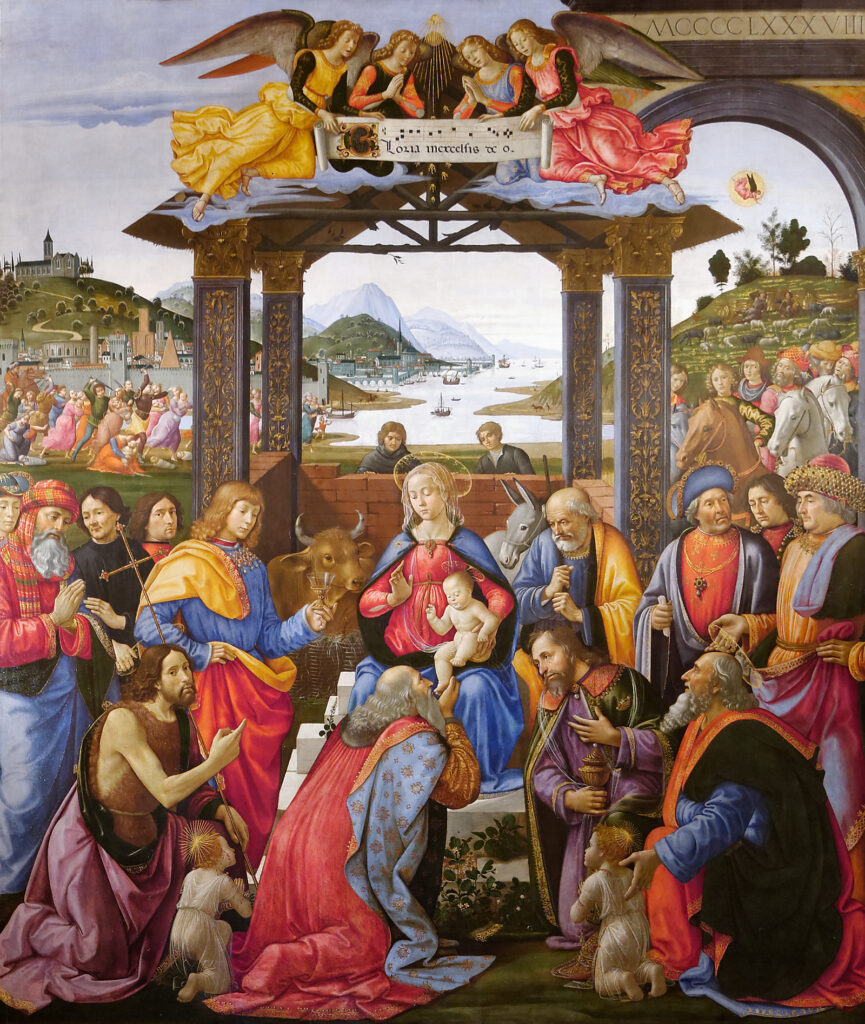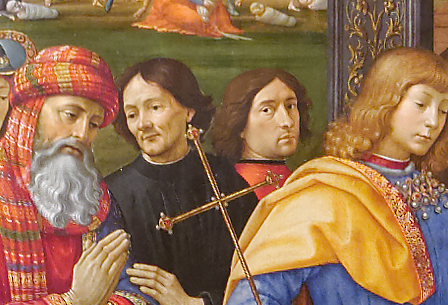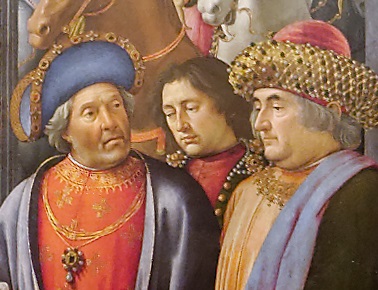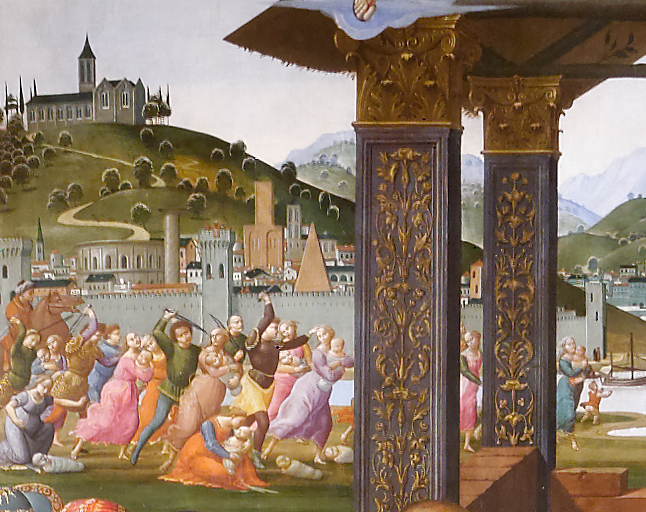Just steps away from the bustling Piazza Santissima Annunziata in Florence, there’s a place that tells a story unlike any other—one of love, loss, and incredible compassion. Welcome to the Ospedale degli Innocenti, or Hospital of the Innocents, the world’s first institution entirely dedicated to the care of abandoned children.
But don’t expect a sad, sterile building. What you’ll find is an architectural masterpiece, a treasure trove of Renaissance art, and an emotional journey through Florence’s past—right down to a tiny, empty cradle that still carries powerful meaning today.
Keep reading to discover together di Ospedale degli Innocenti!
A Cradle of Compassion
At the heart of the Innocenti is a symbolic empty cradle, reminiscent of the one in our nativity scenes. For Christians, the empty cradle represents the season of Advent, a time of hopeful waiting before the birth of Jesus.
But here at the Innocenti, it also stood for something else: the idea that every abandoned child was a reflection of Christ himself—innocent, blameless, and deeply loved. Many of these children, often born out of wedlock, were once called “children of sin”—a harsh label by today’s standards. But the hospital refused to let that define them.
Founded in the early 15th century, this revolutionary institution aimed to break the cycle of shame and poverty, offering these children not only a place to survive but also to thrive, through education, care, and community.
Even the act of abandonment had symbolism: babies were gently placed in a cradle nestled between statues of Mary and Joseph, as if being entrusted to the Holy Family itself. The message was clear—every child was worthy of dignity and love.
A Renaissance Gem with a Bigger Mission
Walking through the Innocenti is like stepping into a hidden gallery of the Florentine Renaissance.
The building was designed by Filippo Brunelleschi, the same genius behind Florence’s Duomo. Inside, you’ll find works by Botticelli, Piero di Cosimo, and the iconic Della Robbia terracottas that decorate the facade featuring swaddled infants, the emblem of the Ospedale itself.
But the true showstopper? The Adoration of the Magi by Domenico Ghirlandaio, a stunning altarpiece that once graced the high altar of the hospital’s church.
Adoration of the Magi by Domenico Ghirlandaio
Originally placed on the high altar of the Church of Santa Maria degli Innocenti, this painting now resides in the Museum of the Innocents.
In Ghirlandaio’s Adoration of the Magi (1488), at the center we see the Virgin Mary with the Christ Child, blessing the visitors. Kneeling beside the Magi are Saint John the Baptist, patron of Florence, and Saint John the Evangelist, protector of the Silk Guild and thus also the patron of the Hospital. They present two small white-clad martyrs, symbolizing the victims of Herod’s Massacre of the Innocents, and at the same time representing the children of the Ospedale.

Among the Magi’s retinue are portraits of wealthy members of Florence’s Silk Guild, dressed in luxurious fabrics and adorned with pearls and fine jewelry. Ghirlandaio’s attention to detail, likely inspired by Flemish painting, shines in the textures and surfaces. On the opposite side, we find the self-portrait of Ghirlandaio, who looks directly at us, next to Francesco Tesori, the donor, dressed in black.


Behind the Virgin, a richly adorned hut with angelic choirs singing praises to God can be seen, while nearby, a wall under construction with two laborers perhaps alludes to the ongoing construction of the Ospedale itself. To the right, an elegant arch bears the date 1488, and in the distance, the angel’s announcement to the shepherds is depicted.
The composition presents not only the Adoration itself but also scenes that precede and follow it chronologically: first, the announcement to the shepherds, who were the first to recognize the Messiah, and later, Herod’s violent response, unleashing terror on innocent children.

Symbolism of the Magi
The Magi have deep symbolic significance in Florentine culture. Philosopher Marsilio Ficino described them as the “first fruits of the nations,” the first among pagans to recognize and worship the divine child.
In Florence, the cult of the Magi took strong root in the late 1300s. By 1391, an Epiphany procession reenacting the Magi’s journey set out from San Marco to the Baptistery. A Compagnia dei Magi was formed at San Marco to organize a major celebration every three years, supported financially by the Florentine government. Members likely came from various social classes, though later the Medici family—especially Cosimo the Elder—became key patrons.
Even today, Florence revives this tradition every January 6th with the Cavalcade of the Magi, organized by the city and the Opera del Duomo.
The Magi were patrons not only of kings and knights, but also of scholars, merchants, travelers, and pilgrims. It’s no surprise that the star which guided them became the emblem of Florence’s Innkeepers’ Guild (Arte degli Albergatori).
A lesser-known interpretation in Florence viewed the three Magi as representing the three social orders:
- Oratores (clergy) – the Magus bearing incense, symbol of prayer;
- Bellatores (nobility/soldiers) – the one with gold, representing earthly power;
- Laboratores (workers) – the one offering myrrh, connected to death and eternal life.
In the Florentine context, these laboratores may have been associated with the merchant-banking class—those who built the city’s wealth and sponsored its greatest works of art, including the Adoration of the Magi.
* Plan Your Visit to Discover the Ospedale degli Innocenti *
In 2015, the Ospedale degli Innocenti reopened with a modern museum layout that makes it easy to explore both its rich art collection and its deeply human history.
Alongside permanent exhibitions, you’ll often find temporary shows, educational programs, and one of the best-kept secrets in Florence—a rooftop terrace café with sweeping views of the Duomo.
Whether you’re an art lover, a history buff, or simply someone curious about the stories that shaped Florence, this is a stop you don’t want to miss.
Of course! Here’s the English translation with a natural tone for a tourist blog:
For information on opening hours, tickets, and current exhibitions, visit the official website of the Museo degli Innocenti.
If you’d like to explore the museum, learn about its history, admire its artworks, and understand its architecture, feel free to contact us at info@iconatoscana.it.
You can also combine this visit with our San Marco Museum Tour